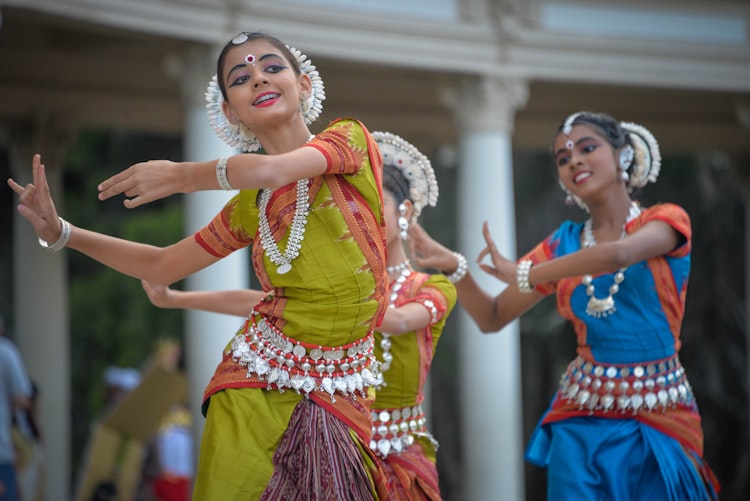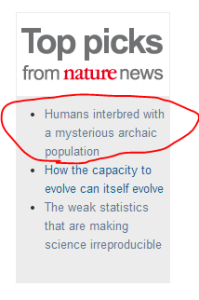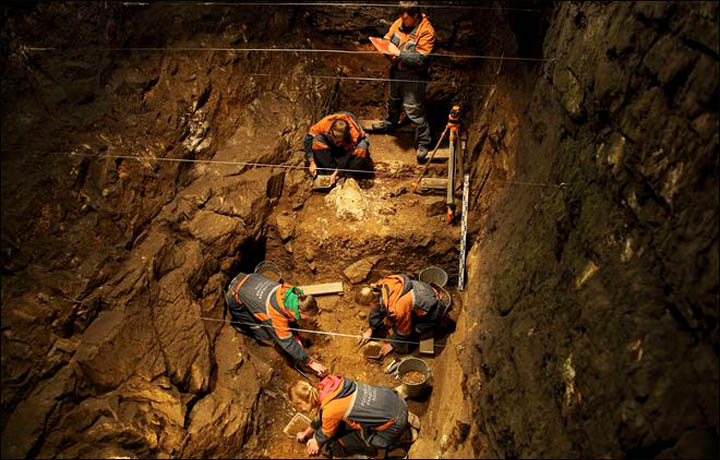
Denisovans, Extremely Ancient Africans - the Role Cheap Sequencing Plays in Rewriting Human History
Human beings are very curious about our evolutionary history as humans. Apparently, that history is being rewritten over the last few years. Lately, every time we check the webpage of Nature News or Scientific American, we find report of another major breakthrough.

Such articles always contain picture of people working hard inside dark caves or underground, as you can see here and here.

What do we know about Denisovans so far? Taken from wiki and Nature News:
1. “Mystery humans spiced up ancients sex lives (Genome analysis suggests there was interbreeding between modern humans, Neanderthals, Denisovans and an unknown archaic population)” (Source: Nature News)
2. “The analysis indicated that modern humans, Neanderthals, and the Denisova hominin last shared a common ancestor around 1 million years ago.”
3. “The mtDNA analysis further suggested this new hominin species was the result of an early migration out of Africa, distinct from the later out-of- Africa migrations associated with Neanderthals and modern humans, but also distinct from the earlier African exodus of Homo erectus.”
4. “A detailed comparison of the Denisovan, Neanderthal, and human genomes has revealed evidence for a complex web of interbreeding among the lineages.”
5. “Through such interbreeding, 17% of the Denisova genome represents DNA from the local Neanderthal population, while evidence was also found of a contribution to the nuclear genome from an ancient hominin lineage yet to be identified,[7] perhaps the source of the anomalously ancient mtDNA.”
6. “Melanesians may not be the only modern-day descendants of Denisovans. David Reich of Harvard University, in collaboration with Mark Stoneking of the Planck Institute team, found genetic evidence that Denisovan ancestry is shared by Melanesians, Australian Aborigines, and smaller scattered groups of people in Southeast Asia, such as the Mamanwa, a Negrito people in the Philippines. However, not all Negritos were found to possess Denisovan genes; Onge Andaman Islanders and Malaysian Jehai, for example, were found to have no significant Denisovan inheritance. These data place the interbreeding event in mainland Southeast Asia, and suggest that Denisovans once ranged widely over eastern Asia.[6][15][16] Based on the modern distribution of Denisova DNA, Denisovans may have crossed the Wallace Line, with Wallacea serving as their last refugium.”
7. “Indeed, half of the HLA alleles of modern Eurasians represent archaic HLA haplotypes, and have been inferred to be of Denisovan or Neanderthal origin.[19] The apparent over-representation of these alleles suggests a positive selective pressure for their retention in the human population.”
They constitute of an incredible amount of new findings.
In another supposedly major advance, Michael F. Hammer’s group reported about extremely ancient humans living in Africa.
Reported elsewhere on the same paper -
Our analysis indicates this lineage diverged from previously known Y chromosomes about 300,000 ago, a time when anatomically modern humans had not yet evolved, said senior study author Prof Michael Hammer of the University of Arizona. This pushes back the time the last common Y chromosome ancestor lived by almost 70 percent.
The most striking feature of this research is that a consumer genetic testing company identified a lineage that didnt fit anywhere on the existing Y chromosome tree, even though the tree had been constructed based on perhaps a half-million individuals or more. Nobody expected to find anything like this.
About 300,000 years ago falls around the time the Neanderthals are believed to have split from the ancestral human lineage. It was not until more than 100,000 years later that anatomically modern humans appear in the fossil record. They differ from the more archaic forms by a more lightly built skeleton, a smaller face tucked under a high forehead, the absence of a cranial ridge and smaller chins.
These are definitely the most exciting times to live in, or are they? Readers should keep in mind that the African study came from only one individual, whereas Denisovan findings are based on one toe, one finger bone and two teeth, nothing more. That is all that scientists have found from ancient Denisovans so far (h/t: @dangraur).
Denisova hominins /d??ni?s?v?/, or Denisovans, are Paleolithic-era members of a species of Homo or subspecies of Homo sapiens. In March 2010, scientists announced the discovery of a finger bone fragment of a juvenile female who lived about 41,000 years ago, found in the remote Denisova Cave in the Altai Mountains in Siberia, a cave which has also been inhabited by Neanderthals and modern humans.[1][2][3] Two teeth and a toe bone belonging to different members of the same population have since been reported.
One thing for sure, humans have an insatiable hunger for knowing how ancient humans looked and lived like, and scientists have immense ability to feed them.